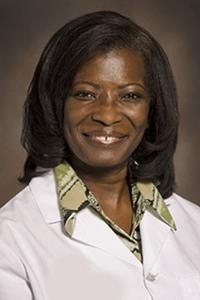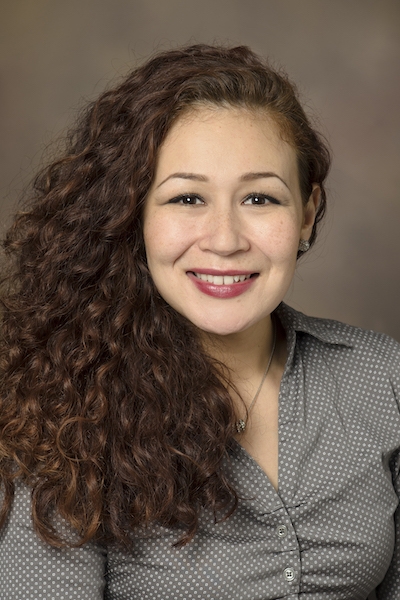
October 4 through October 10, 2020 is National Diversity Week, established in 1998 to raise awareness about the diversity that shapes the United States. We interviewed Victoria E. Murrain, DO, Vice Dean, and Michelle Ortiz, PhD, Assistant Director, of the University of Arizona College of Medicine – Tucson’s Office of Diversity, Equity and Inclusion to learn more about the work being done to increase the diversity of health care professionals.
The lack of representation of American’s multi-racial populace extends into most areas of U.S. white-dominated society. How does the field of medicine mirror that lack of diversity?
Unfortunately, the field of medicine does mirror the lack of representation of America’s multi-racial populace. The demographics of the U.S. are undergoing a significant change such that by 2050 it is anticipated that the current majority will become the minority. Despite this fact, the number of Black, Native American, and Latinx physicians has not paralleled this demographic shift and remain underrepresented in medicine (URiM). According to the AAMC 2019 data, 73% of physicians in the U.S. are either White or Asian, with the remaining 27% composed of African American, Hispanic/Latinx, Native American/American Indian and Unidentified. It is also important to note that URiM physicians compose the largest proportion of the primary care workforce and in the academic setting are slower to promotion, generally holding titles of Assistant Professor or lower.
What fundamental changes need to be made to improve the diversity of professionals in the medical field?
There are several steps that can be taken to level the playing field and create a more equitable environment in the pursuit of a diversifying the medical field. This goal will require intentionality on the part of individuals as well as institutions. Some of these include:
- Investment must be made at the K-12 level to expose URiM youth to potential careers in medicine. This will include role modeling, enhanced academic preparation, introduction to STEM (science, technology, engineering and math) classes and pre-health counseling.
- At the undergraduate and graduate levels, increased opportunities to introduce URiM students to careers in the medical field, shadowing and mentoring opportunities and access to learning specialists who support academic preparation. Resources to support necessary learning support systems. Engagement with medical career leaders (e.g. physicians, medical staff, administrators).
- At the medical school level, investment in resources - many URiM students do not have the means to engage the same resources as their majority counterparts. As the average medical school debt for the class of 2019 is $201,490, scholarships dedicated to alleviating the financial burden of the URiM student is critical.
- A holistic admission process that is less focused on metrics and values the nonacademic attributes that best align with the institution’s mission is also important. One of the major areas necessary to create a more equitable environment requires the recruitment and retention of mentors, concordant with students’ race/ethnicity.
 How does UArizona College of Medicine – Tucson’s Office of Diversity, Equity and Inclusion (ODEI) support those changes?
How does UArizona College of Medicine – Tucson’s Office of Diversity, Equity and Inclusion (ODEI) support those changes?
The UArizona COM – T ODEI is committed to supporting changes to enhance the diversity of health career professions. Our commitment is multifaceted:
- Pipeline programs such as Pathways to Success seeks students in under-resourced high schools in Tucson and provides them with an introduction to health career opportunities, hospital tours, and opportunity to meet and engage with current URiM health professionals of various health careers. We also participate in similar national (Association of American Medical Colleges’ Minority Health Career Fair) and local events.
- In recognition that a larger proportion of students of color begin their postsecondary education in the community college setting, we have initiated a community college advising program to meet with student groups and college counselors to provide information on successful preparation for medical school.
- We partner with pre-health advisors (advisors for students interested in pursuing a health professions career at UArizona) to offer forums and enhanced opportunities for interaction between medical students and faculty with college students.
What are some examples of everyday biases that health care professionals need to look for, within themselves and their colleagues?
We all have biases and recognition of those biases is the first step toward mitigating bias. Studies demonstrate that healthcare professionals, like any other professional, may have biases towards certain groups, including, but not limited to race, ethnicity, gender, age, sexual orientation, size. The Implicit Association Test (IAT) is an online method of identifying one’s biases. Once identified, utilizing a proven method for mitigating bias – such as generating counter-assumptions – can facilitate a self-intervention. We are each encouraged to identify our own voice and become a proactive ally when we notice a colleague or someone else acting inappropriately on a conscious or unconscious bias. Our ultimate goal should be the well-being of our patient or colleague.
What support sources does the UArizona College of Medicine’s Office of Diversity, Equity and Inclusion recommend to Black, Indigenous and People of Color (BIPOC) looking to enter the field of medicine and for those who are currently navigating medical school?
The UArizona ODEI strongly encourages BIPOC interested in careers in health care to identify a mentor as early as possible. We also encourage participation in any of the following support resources:
- SDAC (Student Diversity Advisory Committee) – an advisory committee to the Dean, this student committee is composed of members of the various affinity groups at the medical school.
- Affinity Groups – there are multiple affinity groups that focus on networking, support and mentoring of undergraduate and high school students.
- LEADRS – mentoring program for medical students, by residents and physician faculty. (For more information, contact Christina Renteria at crenteria@email.arizona.edu)
- Journeys into Medicine Panels – Panelists share their experiences navigating medicine to increase understanding about the different paths people can take to getting to where they are, and any challenges they experienced along the way.
For more information and resources, visit:
- UArizona College of Medicine’s Office of Diversity, Equity and Inclusion
- UArizona Health Sciences Office of Diversity, Equity and Inclusion
- Implicit Association Test Harvard’s project implicit offers private on-line tests that help our awareness of unconscious biases.
- Recognizing Microaggressions and the Messages They Send This tool summarizes common examples of microaggressions and their messages, conceptualized by theme.
- Guidelines For Effective White Caucuses This includes practical exercises like questions for introspection on privilege and race relations, qualities and expectations of a good Ally.
- 103 Things White People Can Do For Racial Justice Comprehensive list of materials to read, view, share, as well as conversations that can help us re-learn and revise intrinsic colonist knowledge.
- Anti-Racism Resources A large and evolving curated list of antiracism resources.

